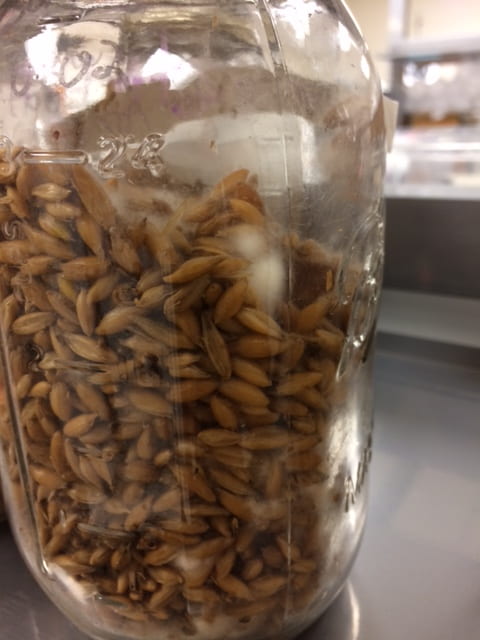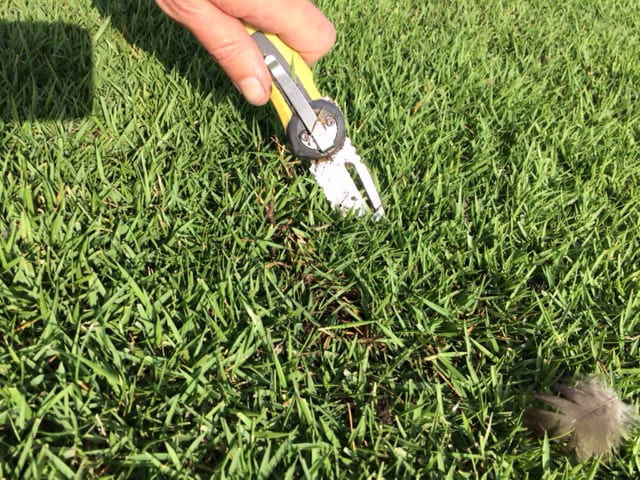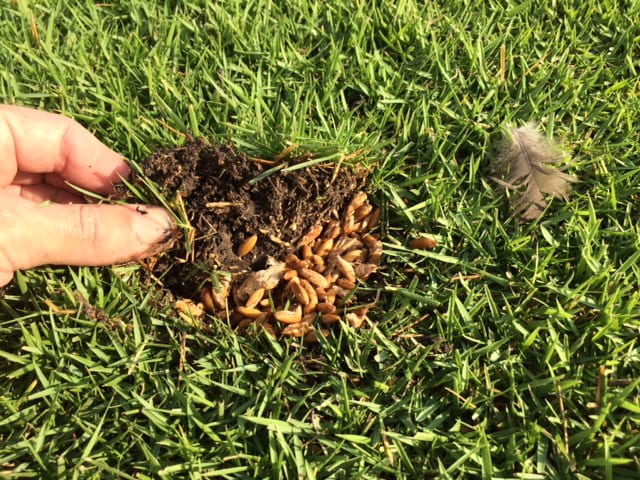(Megan Kennelly, KSU Plant Pathology)
KSU continues its work with the turf breeding team at Texas A&M and colleagues at Purdue. We recently inoculated some breeding lines with the large patch pathogen. We grow the fungus on sterilized oats then bury it just under the thatch layer. Sometimes we see symptoms in fall, but often we do not see them until spring. Scientific research takes a lot of patience :). In the meantime, we are keeping the plots moist to foster fungal growth.
In the meantime, large patch is active especially in wet areas:
Take note of these areas. It’s too late to fertilize zoysia now, but when spring comes around a bump of slow-release N may prompt recovery. In the meantime there may be actions you can take to improve drainage.





